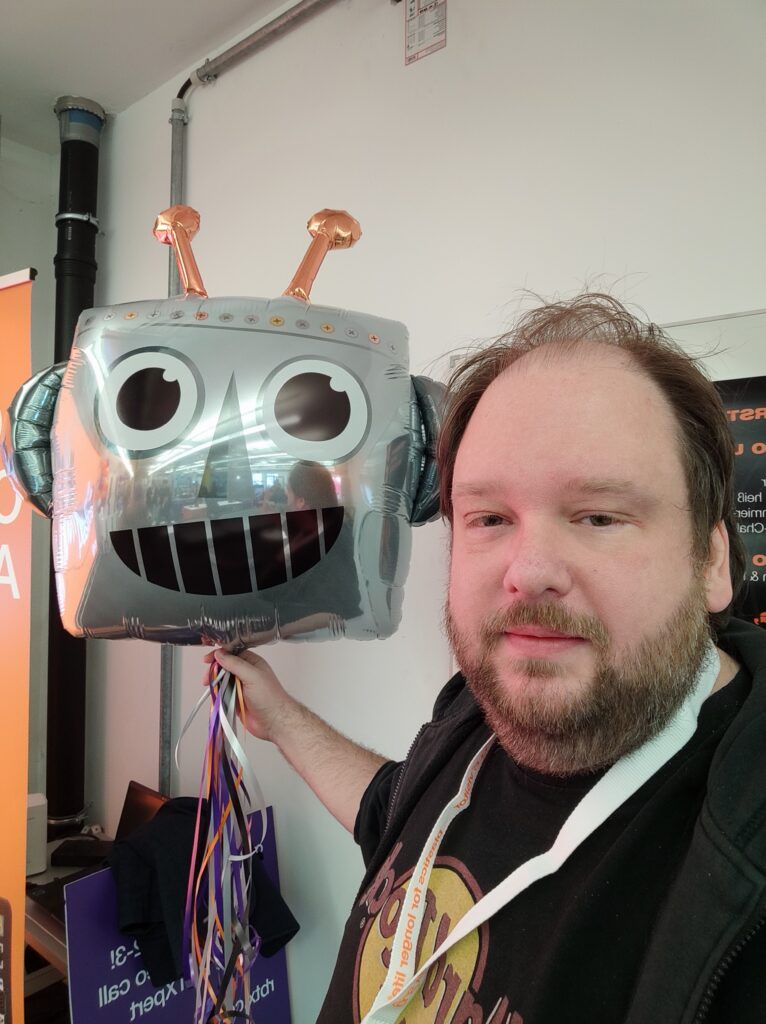
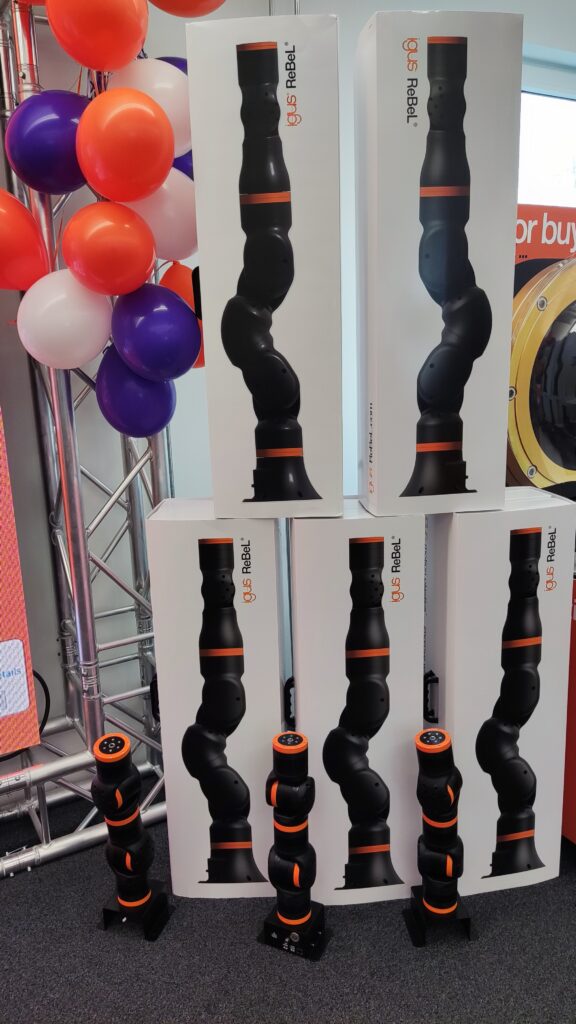
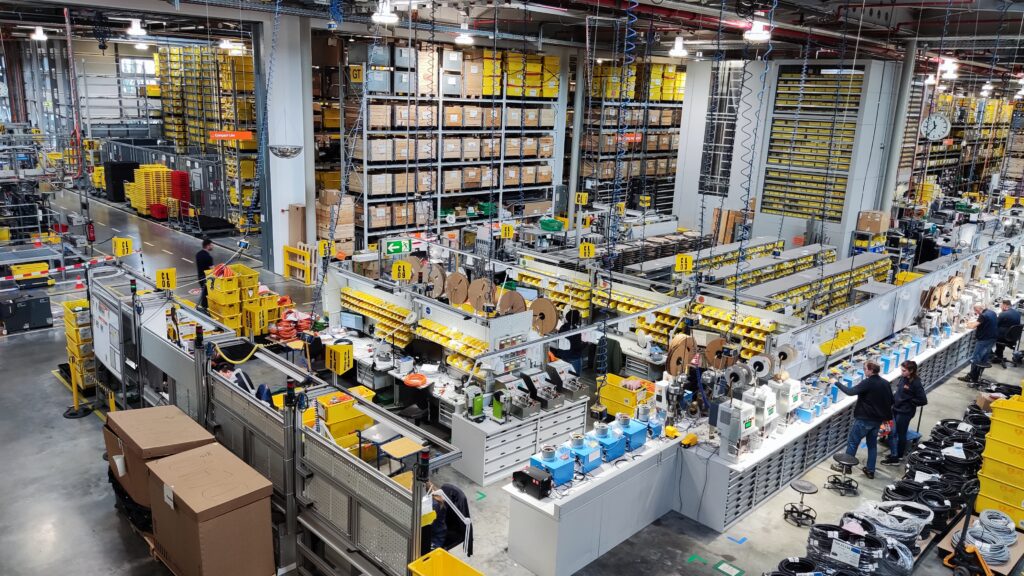
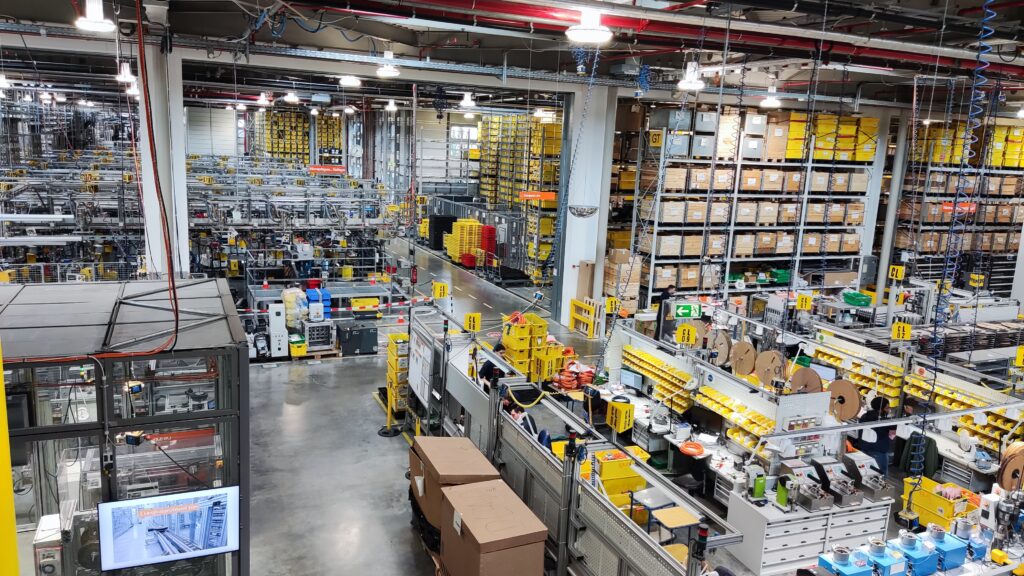
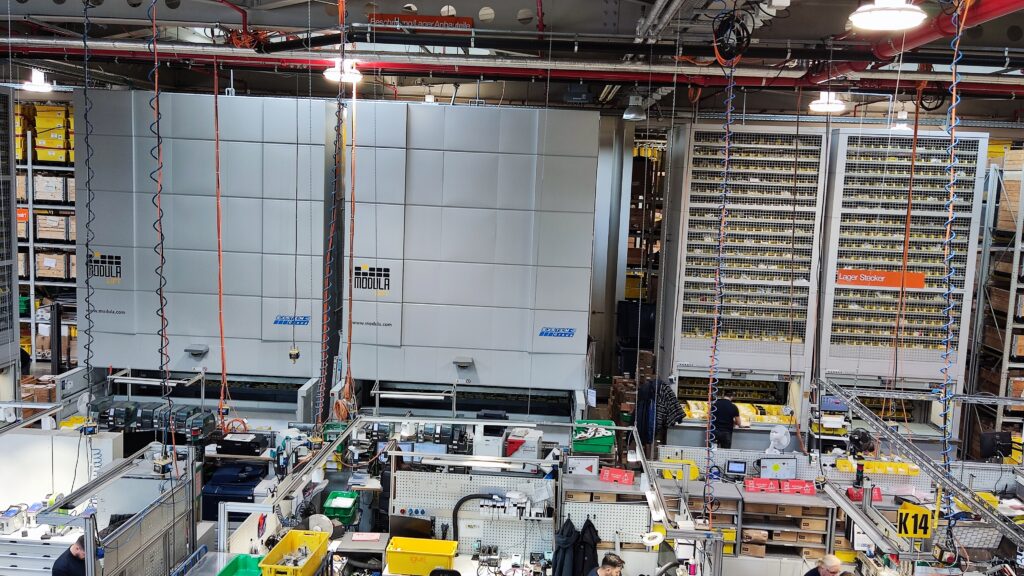

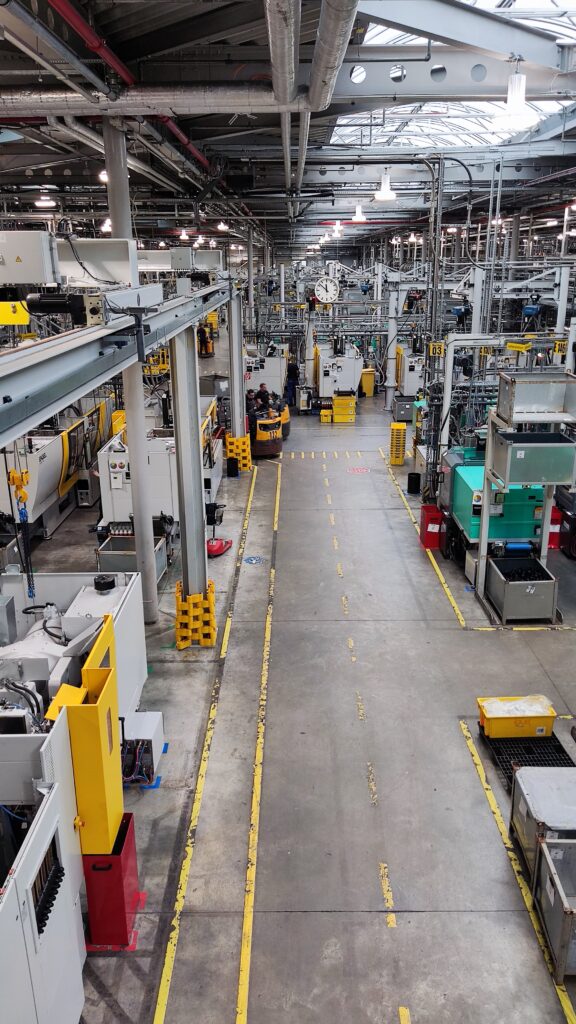
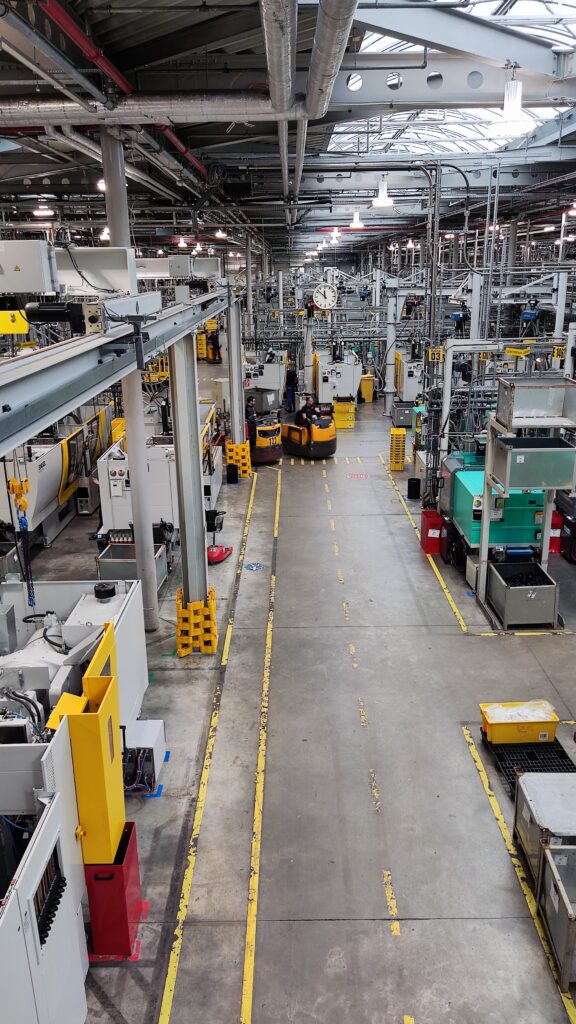
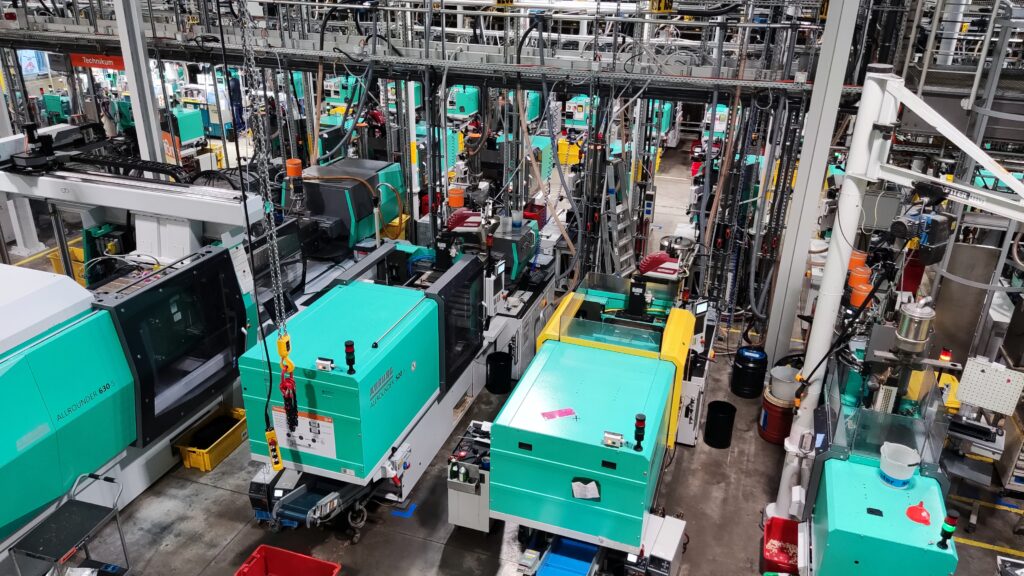
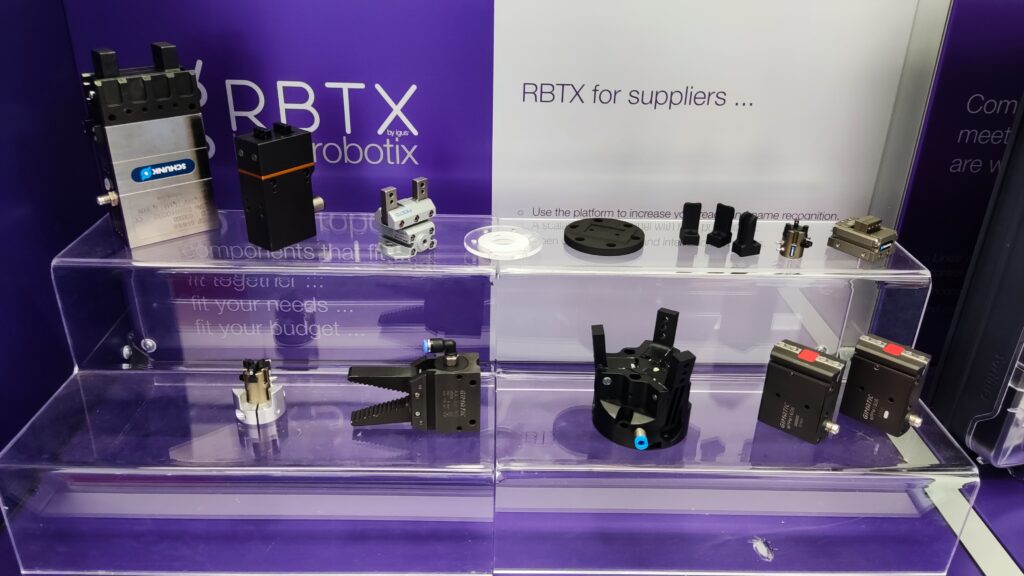
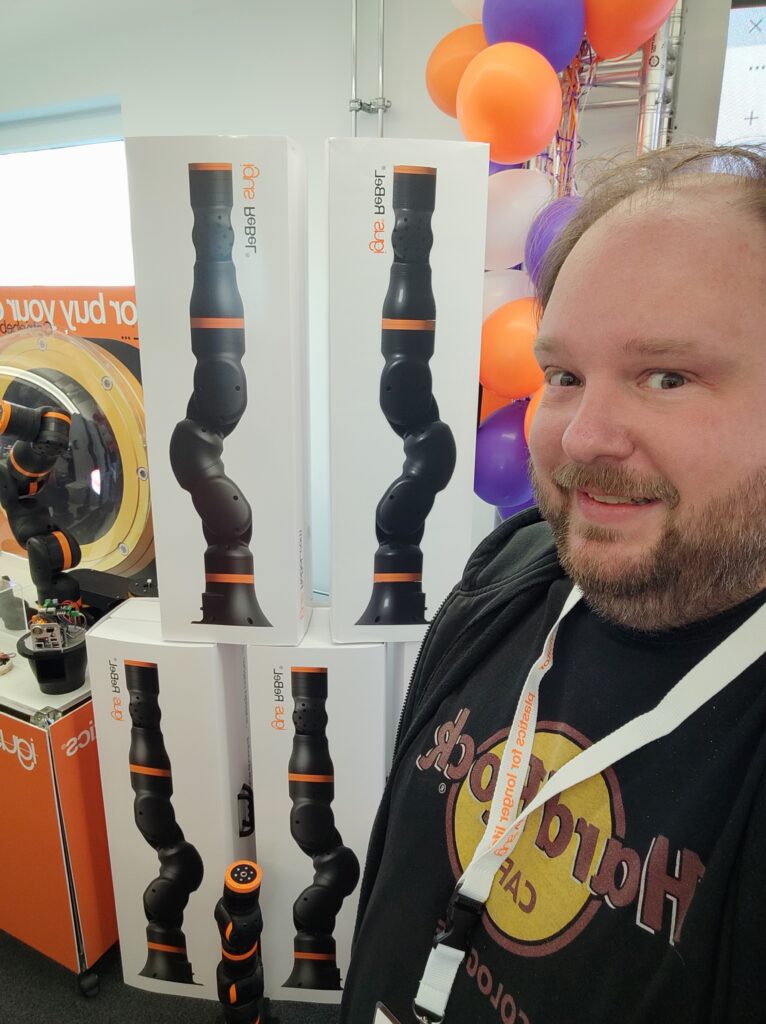
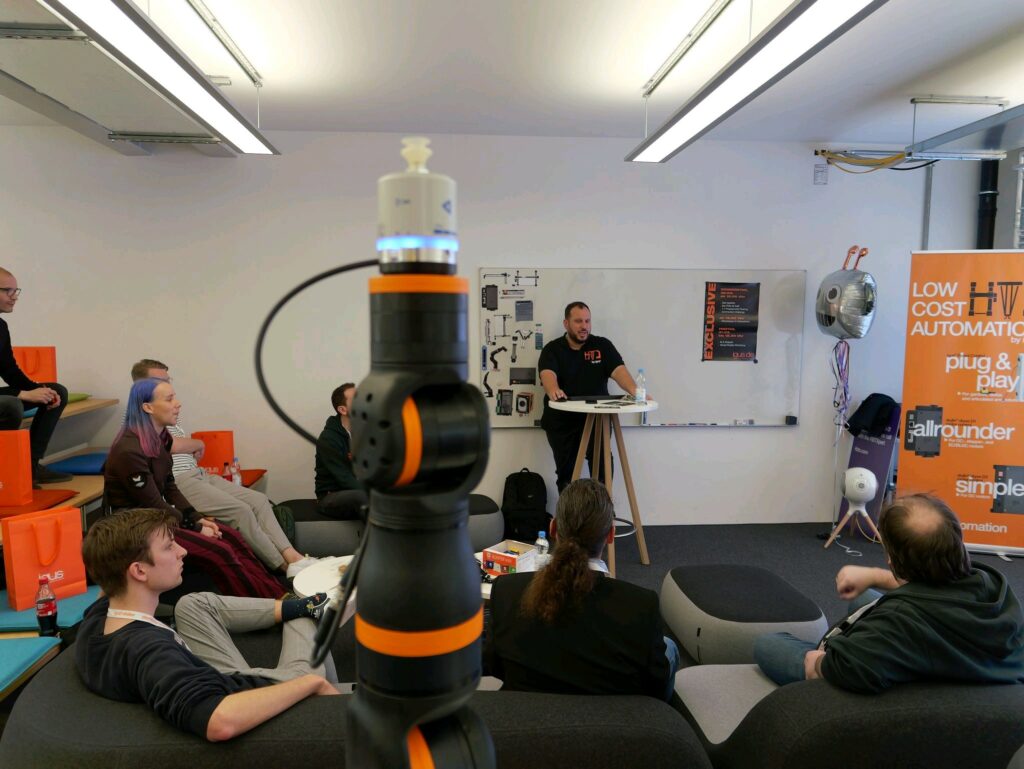
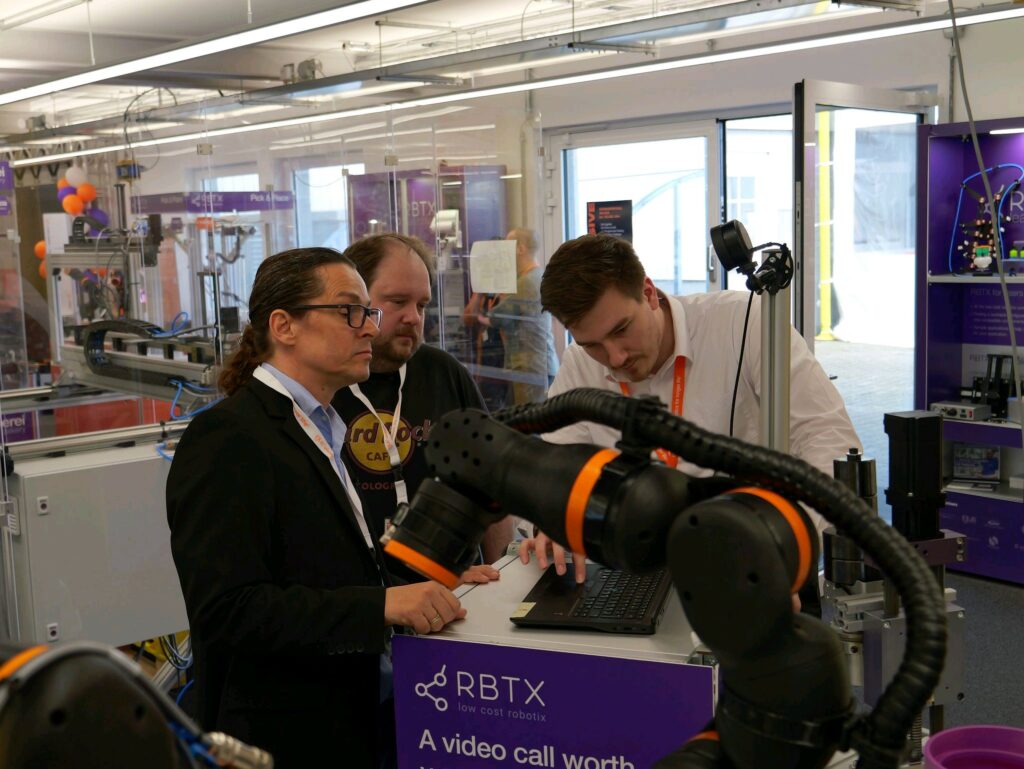
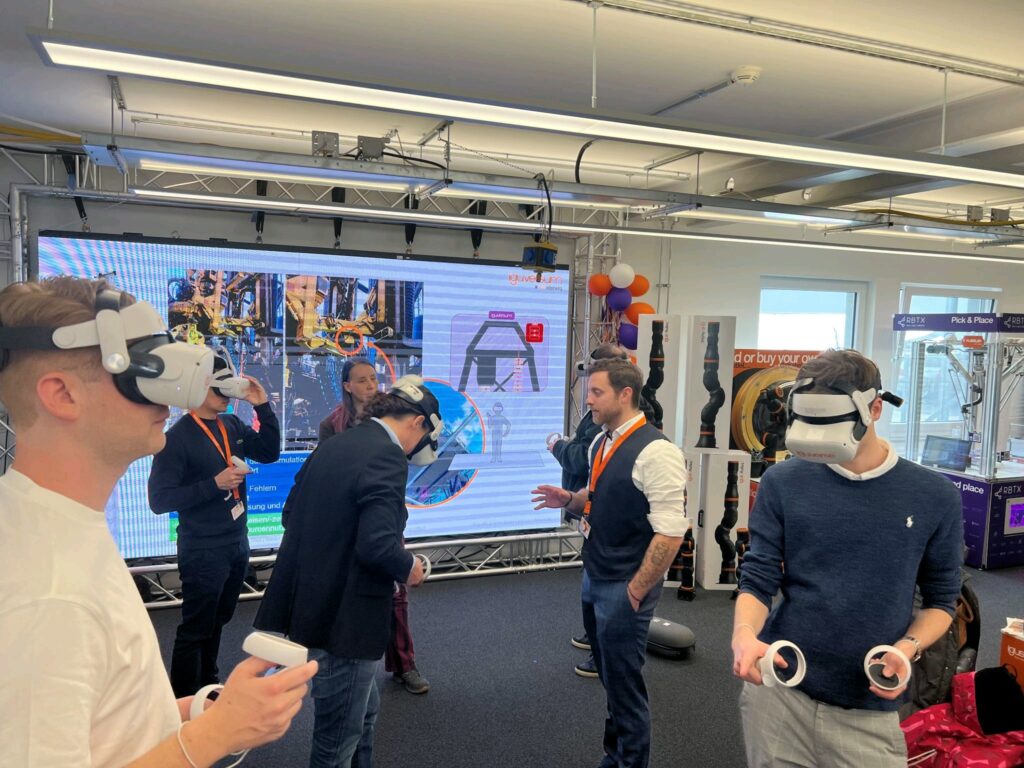
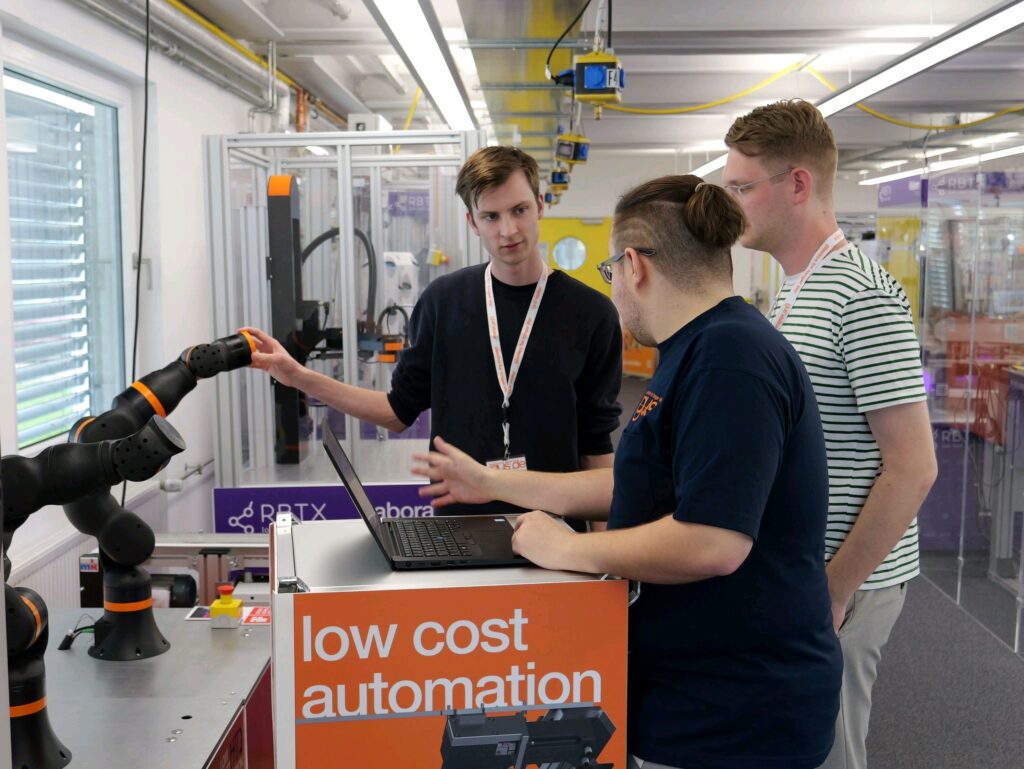
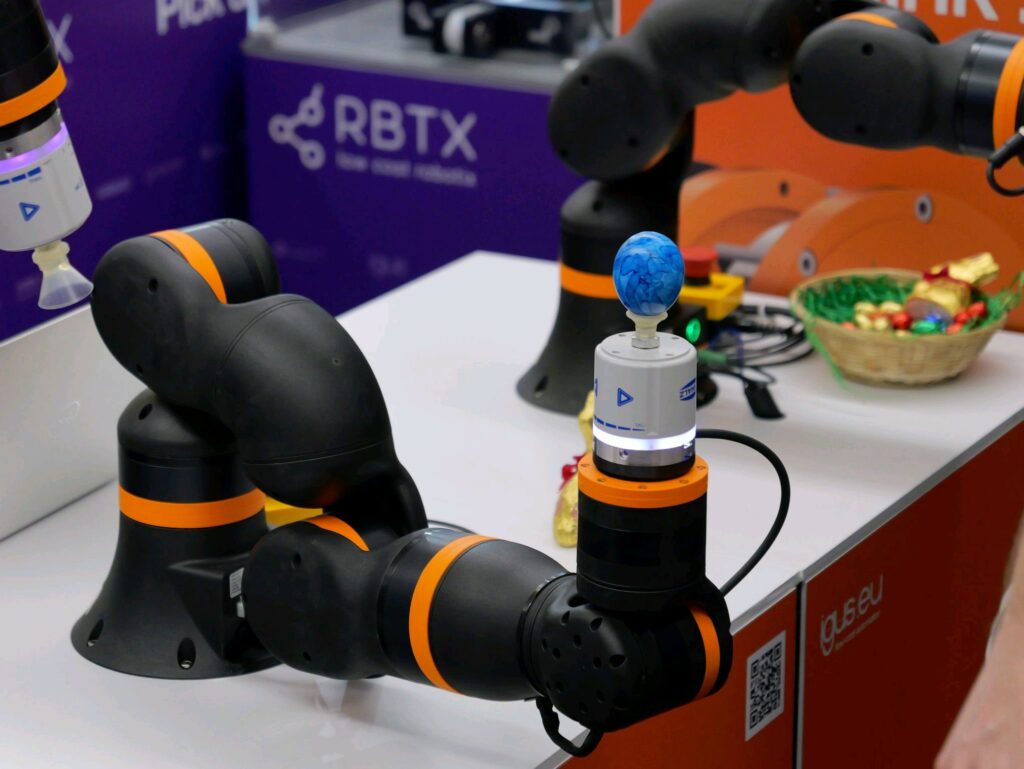
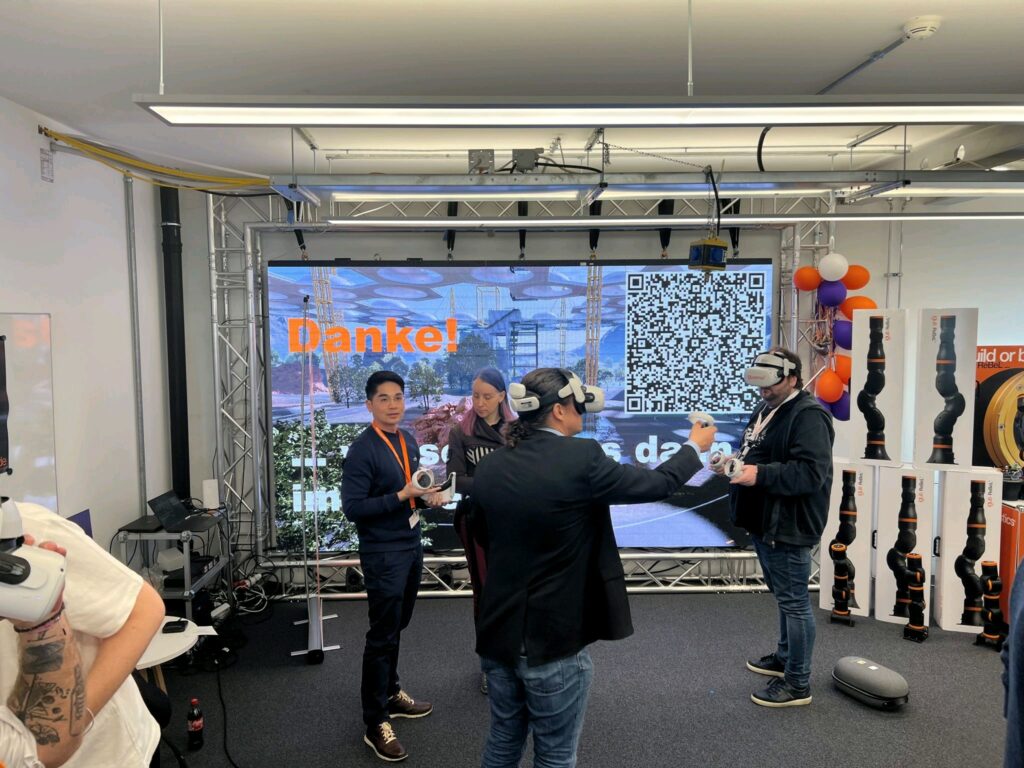


















16 February 2023 – igus®, the global leader in motion plastics, is expanding its broad range of Low-Cost Automation solutions, reflecting the company’s determination to lower the barriers to entering the automation age.
The robotics marketplace helps interested parties find the right automation solution for their individual application as easily, quickly, and cost-effectively as possible. RBTX.com has been part of this effort since 2019. Previously, RBTX was available in eight countries. Now igus is expanding the range and launching the robotics marketplace in ten additional countries – with three more soon to follow.
To ensure competitiveness, more and more companies are automating their processes. However, investment costs are typically high, and the lack of expertise often represents an obstacle – especially for small and medium-sized companies. This is where RBTX, powered by igus, comes into play. The offer includes an online marketplace for cost-effective robotic components and complete solutions, the RBTXpert remote integration service, and customer testing areas at various locations across the globe, where planned customer applications can be tested live before purchase.
“Our RBTX online marketplace grew significantly in the last year,” says Alexander Mühlens, Head of the Automation Technology and Robotics Business Unit at igus. “We started in Germany in 2019. Since our offer was well-received and demand is constantly growing, we expanded RBTX to Austria, France, Great Britain, the US, Canada, India and Singapore in the last few years. We are still continuously working on becoming active in other countries to make Low Cost Automation more accessible worldwide. That’s why, starting immediately, we are offering RBTX in ten more countries: Poland, Switzerland, Denmark, Italy, Japan, China, Taiwan, South Korea, Vietnam, and Thailand. Three more will follow soon: Spain, Brazil, and Turkey.”
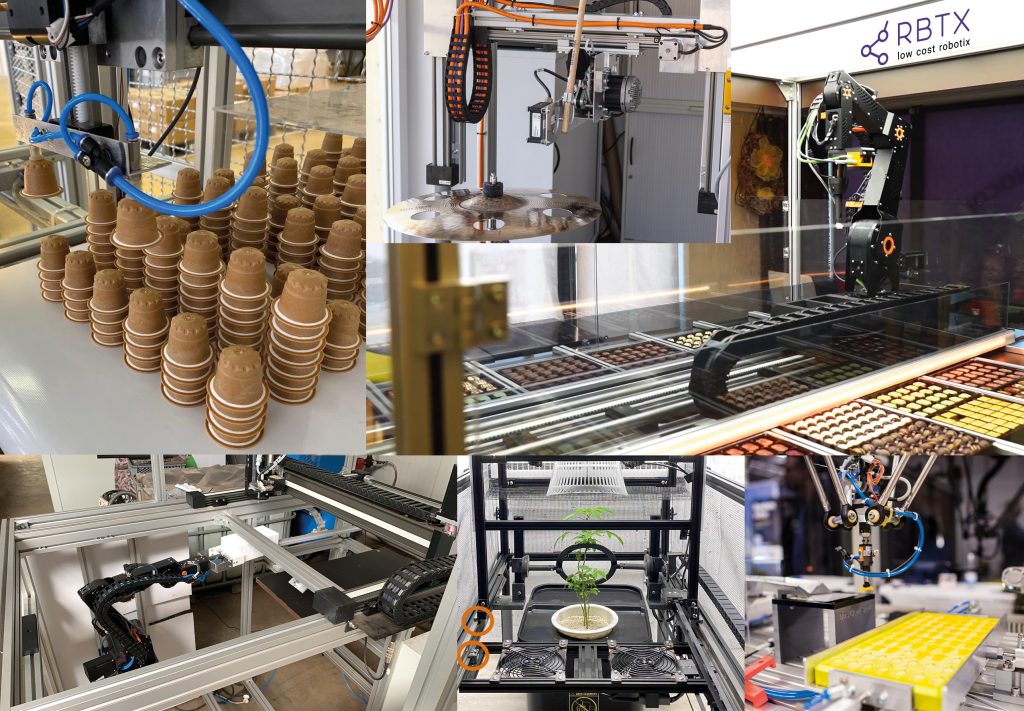
At RBTX.com, interested parties have access to more than 300 individual robotics components from 78 manufacturers and more than 150 complete solutions from real-world applications – including guaranteed hardware and software compatibility.
Additionally, the online marketplace offers a place for humans and robots to meet. In the Customer Testing Area, customers can work with an RBTXpert in the remote integrator service to test the feasibility of their planned application. The RBTXpert engages in a video call from this environment with those interested in automation and provides individual advice.
“In Germany alone, we implement up to 30 projects per week. We also have customer testing areas on-site in many other countries so that the RBTXpert can offer support in various languages and time zones,” says Alexander Mühlens. “This gives even more interested parties across the globe direct access to a wide range of cost-effective robotics.”
RBTX powered by igus baut Angebot international weiter aus und macht Low Cost Automation in 10 weiteren Ländern zugänglich
Köln, 23. Januar 2023 – Mit seinem Low Cost Automation Angebot ist igus angetreten, die Einstiegshürden ins Automationszeitalter zu senken. Teil des Angebots ist seit 2019 auch RBTX.com. Der Robotik-Marktplatz hilft Interessierten dabei, so einfach, schnell und kostengünstig wie möglich die passende Automatisierungslösung für ihre individuelle Anwendung zu finden. Bisher war RBTX in acht Ländern verfügbar. Jetzt weitet igus das Angebot aus und startet den Robotik-Marktplatz in zehn zusätzlichen Ländern – drei weitere folgen bald.
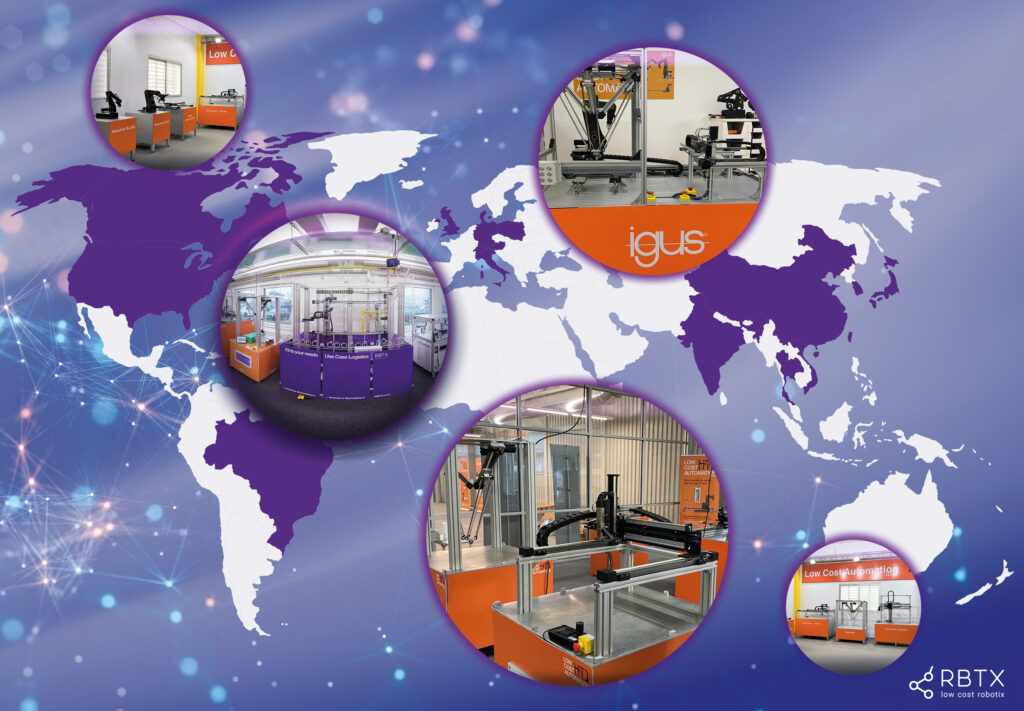
Um die eigene Wettbewerbsfähigkeit zu sichern, setzen immer mehr Unternehmen auf die Automatisierung ihrer Prozesse. Die meist hohen Investitionskosten und das fehlende Know-how stellen jedoch nach wie vor oft eine Hürde dar – insbesondere für kleinere und mittelständische Betriebe. Hier kommt RBTX powered by igus ins Spiel: Das Angebot umfasst einen Online-Marktplatz für kostengünstige Robotik-Komponenten und Komplettlösungen, den RBTXpert Remote-Integrationsservice und Customer Testing Areas an verschiedenen Standorten weltweit, wo geplante Kundenanwendungen gemeinsam vor dem Kauf live getestet werden können. Getreu dem Motto: Test before invest. So macht RBTX Automatisierung für Alle zugänglich – ob Bäckerei, Pharmalabor oder Automobil-OEM. „Unser RBTX Online-Marktplatz ist im letzten Jahr stark gewachsen“, sagt Alexander Mühlens, Leiter Geschäftsbereich Automatisierungstechnik und Robotik bei igus. „Gestartet sind wir 2019 in Deutschland. Da unser Angebot sehr gut angenommen wurde und die Nachfrage stetig wächst, haben wir RBTX in den vergangenen Jahren bereits auf Österreich, Frankreich, Großbritannien, die USA, Kanada, Indien und Singapur ausgeweitet. Wir arbeiten jedoch kontinuierlich daran, in weiteren Ländern aktiv zu werden, um Low Cost Automation weltweit zugänglicher zu machen. Daher bieten wir RBTX ab sofort in zehn weiteren Ländern an: Polen, Schweiz, Dänemark, Italien, Japan, China, Taiwan, Südkorea, Vietnam und Thailand. Mit Spanien, Brasilien und der Türkei folgen bald noch drei weitere.”

Schnelle Roboter-Integration mit Remote-Services boomt
Auf RBTX.com haben Interessierte aktuell Zugang zu über 300 einzelnen Robotik-Komponenten von 78 Herstellern sowie über 150 Komplettlösungen aus der Praxis – inklusive garantierter Hardware- und Softwarekompatibilität. Der Online-Marktplatz bietet auch einen Ort, an dem sich Mensch und Roboter begegnen. In der Customer Testing Area können Kunden gemeinsam mit einem RBTXperten, dem Remote-Integrator-Service, die Machbarkeit ihrer geplanten Anwendung testen. Der RBTXpert verbindet sich per Live-Videocall aus dieser Umgebung mit Automatisierungswilligen für eine individuelle Beratung. „Allein in Deutschland führen wir bis zu 30 Projekte pro Woche durch. Auch in vielen anderen Ländern haben wir Customer Testing Areas vor Ort, sodass der RBTXpert in diversen Sprachen und Zeitzonen beraten kann“, betont Alexander Mühlens. „Dadurch bekommen noch mehr Interessierte weltweit direkten Zugang zu einem vielfältigen Angebot für kostengünstige Robotik. So gibt es zum Beispiel Klebeanwendungen bereits ab 5.804 Euro oder Qualitätskontrollanwendungen ab 5.476 Euro.“
Durch intuitives Design die richtigen Komponenten und über 100 kostengünstige Automatisierungs-Lösungen sofort im Blick
Köln/Nürnberg, 9. November 2022 – Wer auf der Suche nach einer individuellen und kostengünstigen Automatisierungslösung ist, braucht dank des RBTX Online-Marktplatzes von igus nicht lange suchen. Anstatt aus vielen verschiedenen Quellen finden Interessierte hier Low Cost Robotik-Komponenten unterschiedlicher Hersteller – immer mit Preis- und Kompatibilitätsgarantie. Damit die Auswahl der passenden Einzelteile oder des fertigen Systems noch einfacher gelingt, präsentiert igus den Robotik-Marktplatz 2.0 jetzt in neuem Design und mit neuen Funktionen.
Alle Möglichkeiten der Low Cost Robotik auf einer Plattform bündeln und Automation so leicht zugänglich wie möglich machen: Dieses Ziel verfolgt der motion plastics Spezialist igus mit seinem Robotik-Marktplatz RBTX.com, der 2019 an den Start ging. Die Online-Plattform bringt Anwender und Anbieter von Low Cost Robotik einfach und schnell zusammen, damit Interessierte für ihre Automationskonzepte genau die Einzelkomponenten oder fertigen Komplettlösungen finden, die ihren Anforderungen und ihrem Budget entsprechen. „Inzwischen kommen auf unserem RBTX-Marktplatz bereits 76 Partner zusammen. RBTX ist in 9 Ländern verfügbar und Interessierten stehen aktuell 259 verschiedene Produkte zur Auswahl – von Robotern über Software, Steuerungen und Leistungselektronik bis hin zu Kameras, Greifern, Sensoren oder Motoren“, erklärt Alexander Mühlens, Leiter Geschäftsbereich Automatisierungstechnik und Robotik bei igus. Dabei werden alle Komponenten vorab miteinander kombiniert und getestet, sodass sie zu 100 Prozent zusammen funktionieren. „Wir möchten unseren Online-Marktplatz fortlaufend um weitere Partner und Produkte erweitern, damit Anwender stets Zugang zu einem aktuellen und vielfältigen Angebot in diesem schnell wachsenden Marktsegment haben“, so Mühlens.

Eines der Unternehmensziele von igus: “become the easiest company to deal with“. Das gilt auch für die Benutzerfreundlichkeit der Online-Tools und Plattformen wie RBTX. „Wir haben unsere Webseite analysiert und Feedback von unseren Kunden eingeholt, um herauszufinden, wie wir den Online-Marktplatz und die User Experience weiter optimieren können. Mit dem neuen Design wollen wir noch mehr Marktplatz-Charakter und Übersichtlichkeit schaffen und eine noch intuitivere Nutzung ermöglichen. Damit jeder Interessierte so schnell und einfach wie möglich eine passende Robotik-Lösung findet“, sagt Mühlens. Darüber hinaus finden Kunden auf der Plattform über 100 fertige Low Cost Komplettlösungen und Applikationsbeispiele mit Kompatibilitätsgarantie und Stückliste. So gibt es beispielsweise mehrere Klebeanwendungen bereits ab 6.010 Euro. Dank neuem Design inklusive Filterfunktion nach Anwendungsfall oder Branche geht das nun noch einfacher. Zudem gibt es jetzt weitere Produktkategorien wie Software. So lassen sich auch GCODE- oder CSV-Dateikonverter sowie komplette LabVIEW-, MATLAB- und ROS Node-Schnittstellen schnell finden.
Wer nicht genau weiß, welche Automatisierungslösung die richtige ist oder welche Komponenten für das eigene Automatisierungskonzept benötigt werden, kann sich den RBTXpert zur Hilfe holen. Dieser steht Nutzern nun bei jedem Schritt auf der Webseite zur Verfügung und lässt sich direkt für einen Beratungstermin buchen. Dahinter stecken erfahrene Automatisierungsexperten von igus, die Interessierten mit Rat und Tat zur Seite stehen, um für jeden Anwendungsfall die passende Lösung zu finden. Dieser Service ist eine kostenlose Videoberatung, in der Interessierte am Ende ein individuelles Festpreisangebot erhalten. Auf einer 400 Quadratmeter großen Customer Testing Area führen die Experten täglich Live-Videoberatungen durch und testen gemeinsam mit dem Kunden die Machbarkeit der geplanten Automatisierung. Mit “Test before Invest” können Kunden ganz bequem Ihre Automatisierungsaufgaben einsenden. Die Robotik-Spezialisten testen dann die Roboterinstallation innerhalb einer Stunde kostenlos mit dem Kundenwerkstück. „Dieser Service wird immer mehr genutzt. In Deutschland haben wir aktuell rund 10 Tests pro Woche. Kunden erhalten danach ein Video zum Handlings-Test mit Festpreisangebot zu den benötigten Komponenten, wenn Sie die Anwendung umsetzen wollen”, stellt Alexander Mühlens heraus und fasst zusammen: „Seit Beginn haben wir bereits über 1.200 Projekte betreut und wir beraten im Schnitt allein in Deutschland 25 Kunden pro Woche. Wir stehen dabei Interessierten mit Ideen und unserem ganzen Know-how intensiv zur Seite, damit wirklich jeder ganz einfach eine für sich passende Robotik-Lösung findet, ohne dabei von den Kosten ausgebremst zu werden.“
motion plastics von igus mit intuitiver Software von Commonplace Robotics für einfache Lösungen in der Automatisierung
Köln, 29. September 2022 – Der motion plastics Spezialist igus investiert in den Ausbau seiner Aktivitäten in der Low Cost Automatisierung und hat jetzt die mehrheitlichen Anteile an Commonplace Robotics mit Sitz in Bissendorf bei Osnabrück erworben. Commonplace Robotics ist als Integrator spezialisiert auf intuitiv bedienbare Steuerung und Software sowie Leistungselektronik für die Robotik, sowohl im Industrie- als auch im Bildungsbereich. Beide Unternehmen arbeiten bereits seit sechs Jahren intensiv zusammen und haben unter anderem gemeinsam die igus Robot Control entwickelt, welche die Low Cost Kinematiken von igus aus Hochleistungskunststoffen ergänzt.
Vor 11 Jahren gründete Dr. Christian Meyer, bis dahin im Fraunhofer-Institut für Produktionstechnik und Automatisierung tätig, die Firma Commonplace Robotics. Der Name war Programm: Die Integration und Bedienung von Robotern so günstig und einfach machen, dass sie “commonplace” werden – also überall einsetzbar sind. Die ersten Produkte mit Steuerung und eigener Leistungselektronik waren Roboter für die Didaktik. 2016 trat Christian Meyer an igus heran, denn er stellte fest, dass die Roboter-Kinematiken von igus zu seiner Vision von “commonplace” passten: günstig, einfach, tauglich für die Industrie. Inzwischen haben die beiden Unternehmen gemeinsam Produkte wie die iRC igus Robot Control und den ReBeL Cobot sowie einen Aktuator entwickelt. Durch die hohe Fertigungstiefe von Commonplace Robotics – von Firmware und Software über Schaltschrankbau bis hin zur Platinenbestückung – können Neuentwicklungen schnell umgesetzt werden.
„Viele Kunden sind überrascht, dass sie ohne Programmierkenntnisse einfache Roboteraufgaben schon in 30 Minuten realisieren können”, sagt Frank Blase, Geschäftsführer der igus GmbH. „Wir freuen uns sehr, dass nach der intensiven Zusammenarbeit der letzten sechs Jahre jetzt ein noch fokussierteres Vorgehen bei der Low Cost Automatisierung möglich ist.” Mit der Akquisition bündeln Commonplace Robotics und igus ihre Innovationskraft. Dr. Christian Meyer sagt: „Wir freuen uns auf spannende technologische Projekte mit igus. Gerade über die von igus betriebene Plattform RBTX für Low Cost Robotik kommen täglich neue Anforderungen von Kunden aus allen Bereichen der Industrie in unsere Labore. Vieles davon ist schnell umsetzbar, zumal wir mit der Investition expandieren werden.” Neuestes Produkt der Kooperation ist der ReBeL Cobot für 4.970 Euro inklusive Steuerung. Der Aktuator, auch als Einzelkomponente erhältlich, kombiniert das Kunststoff-Knowhow von igus im Getriebe mit der Leistungselektronik und Software von Commonplace Robotics. Der ReBeL kann mit sechs Achsen bis zu zwei Kilogramm Traglast bei einer Reichweite von 664 Millimetern handhaben – und das bei einem Eigengewicht von nur 8,2 Kilogramm. Anfragen und Bestellungen kommen einerseits aus klassischen Anwendungsgebieten wie der Qualitätskontrolle und Pick and Place- Anwendungen im Maschinenbau, und andererseits aus neuen Anwendungsgebieten wie der Restaurant-Automatisierung oder dem Urban Farming.
Auf der Motek in Stuttgart (Halle 7, Stand 7320 und 7321) und der SPS Messe in Nürnberg (Halle 4, Stand 310) können sich Interessierte live einen Eindruck der gemeinsam entwickelten Innovationen verschaffen.
Igus igumania game. Build your own Mars Rover assembling automation factory and improve it with @igusgmbh products. Enjoy this new game soon in your Webbrowser and on other plattforms. Get to know Rusty the robot and Dave the igus employee while learning about igus smart plastics products and low cost Automation. I really enjoyed playing this game, mainly for one reason: robots 😉
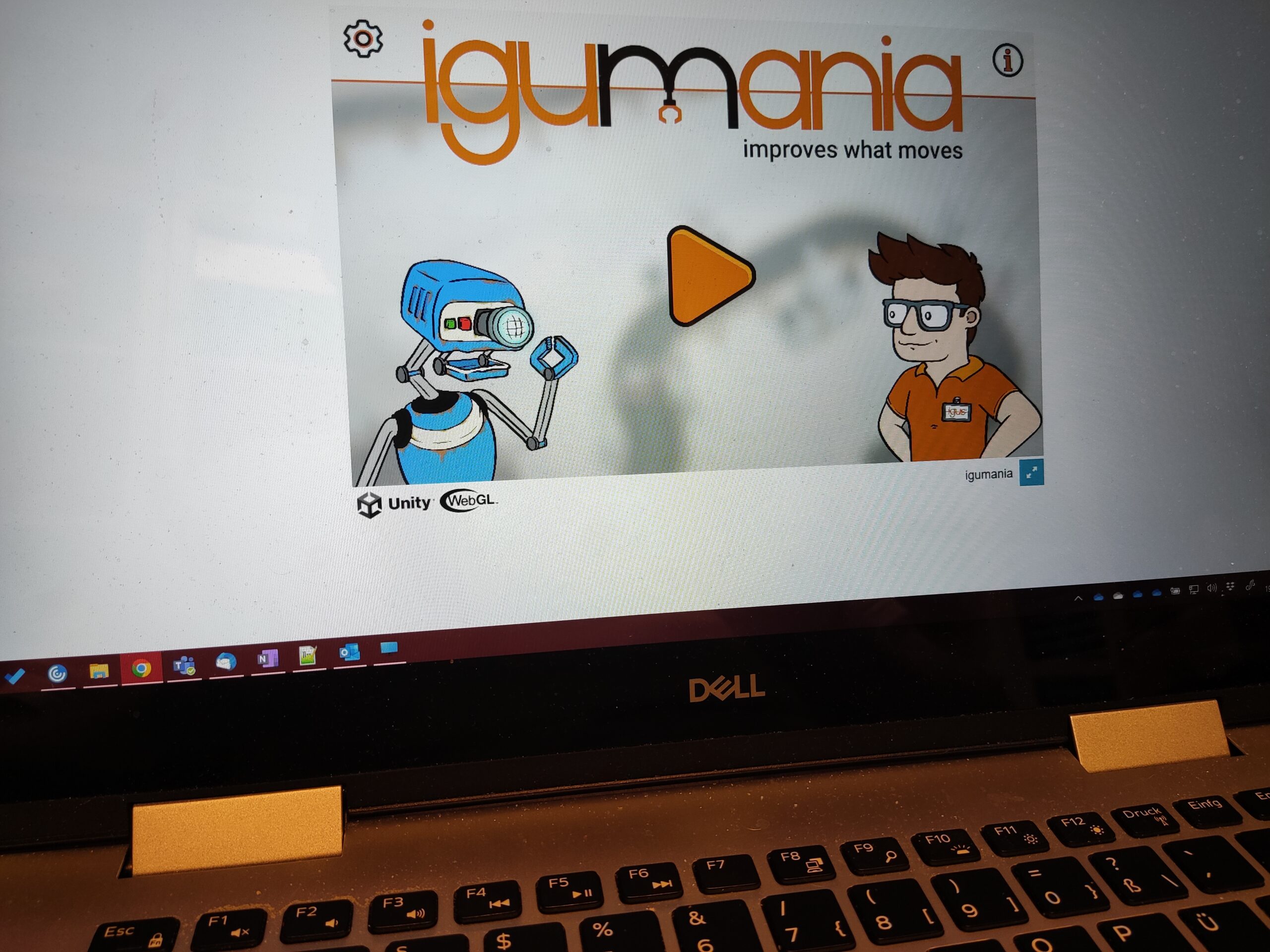
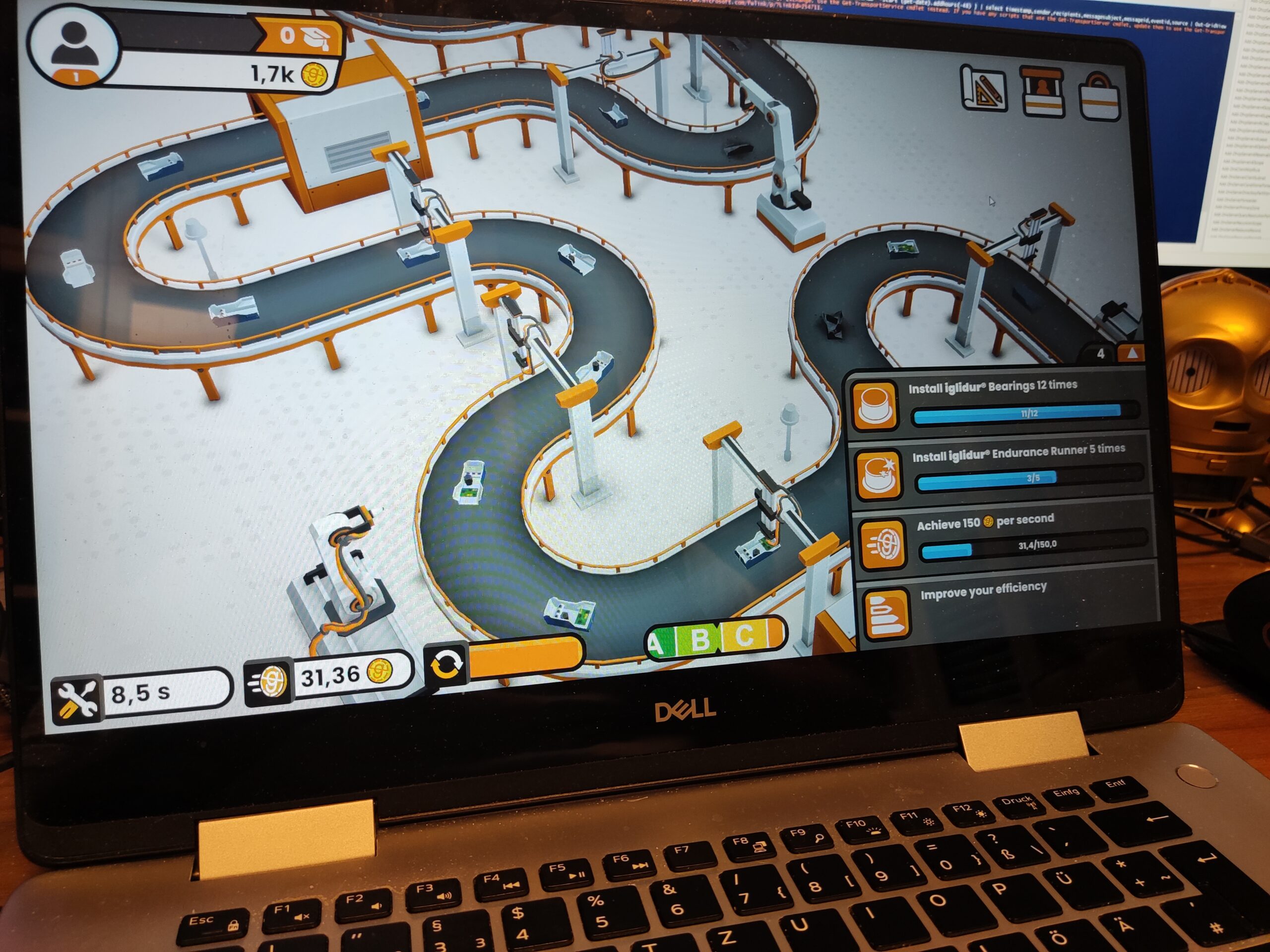
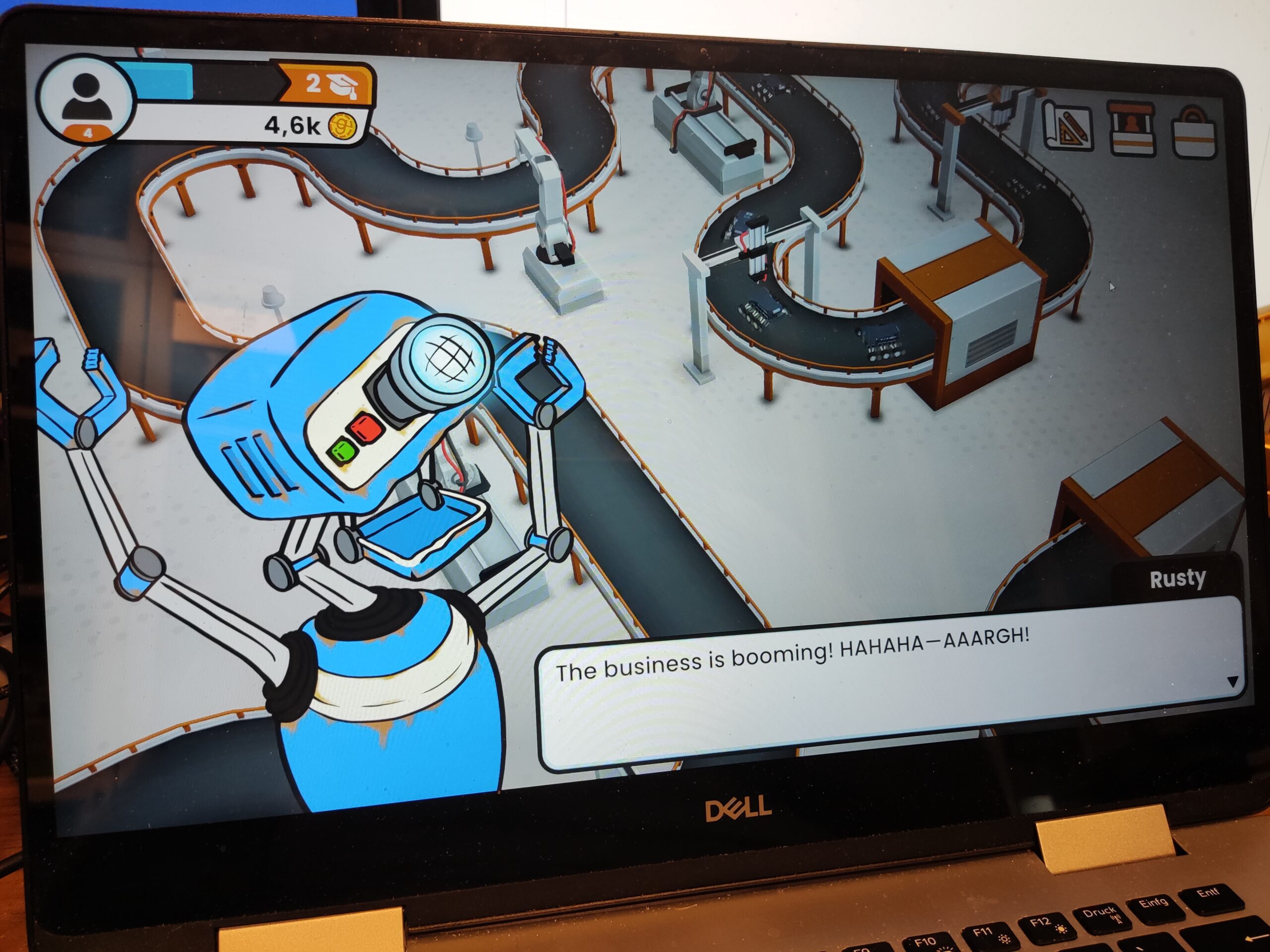
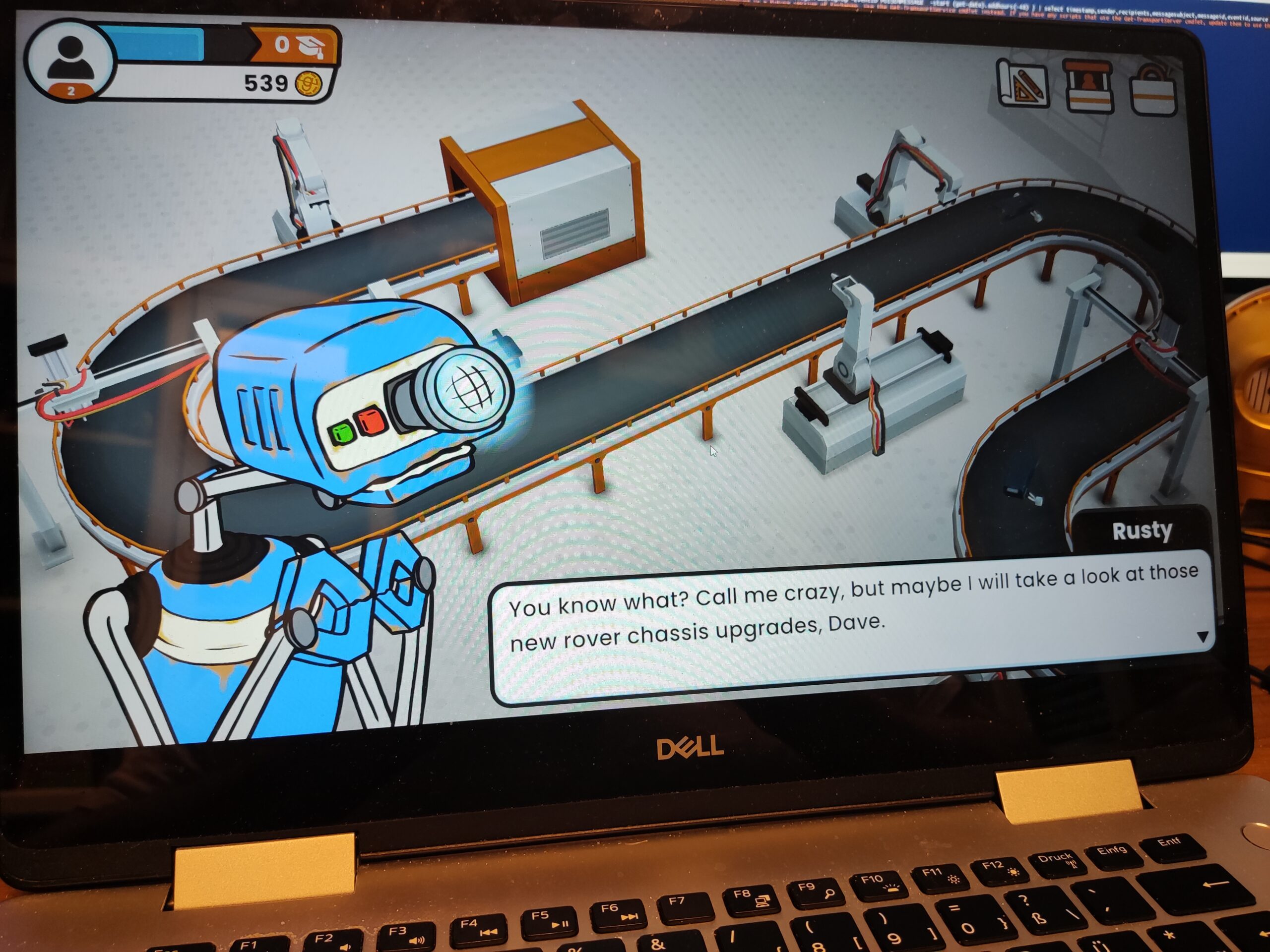

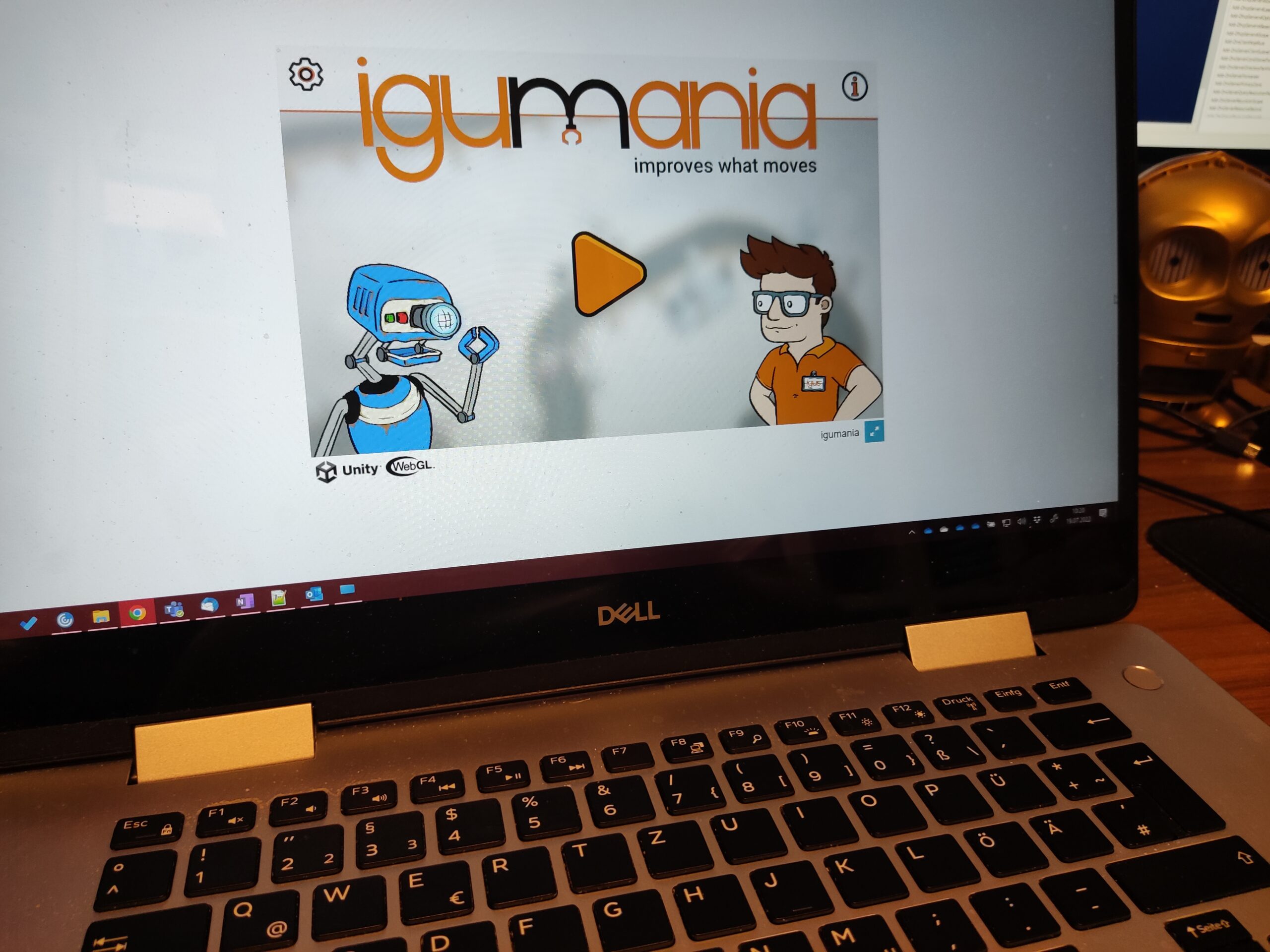
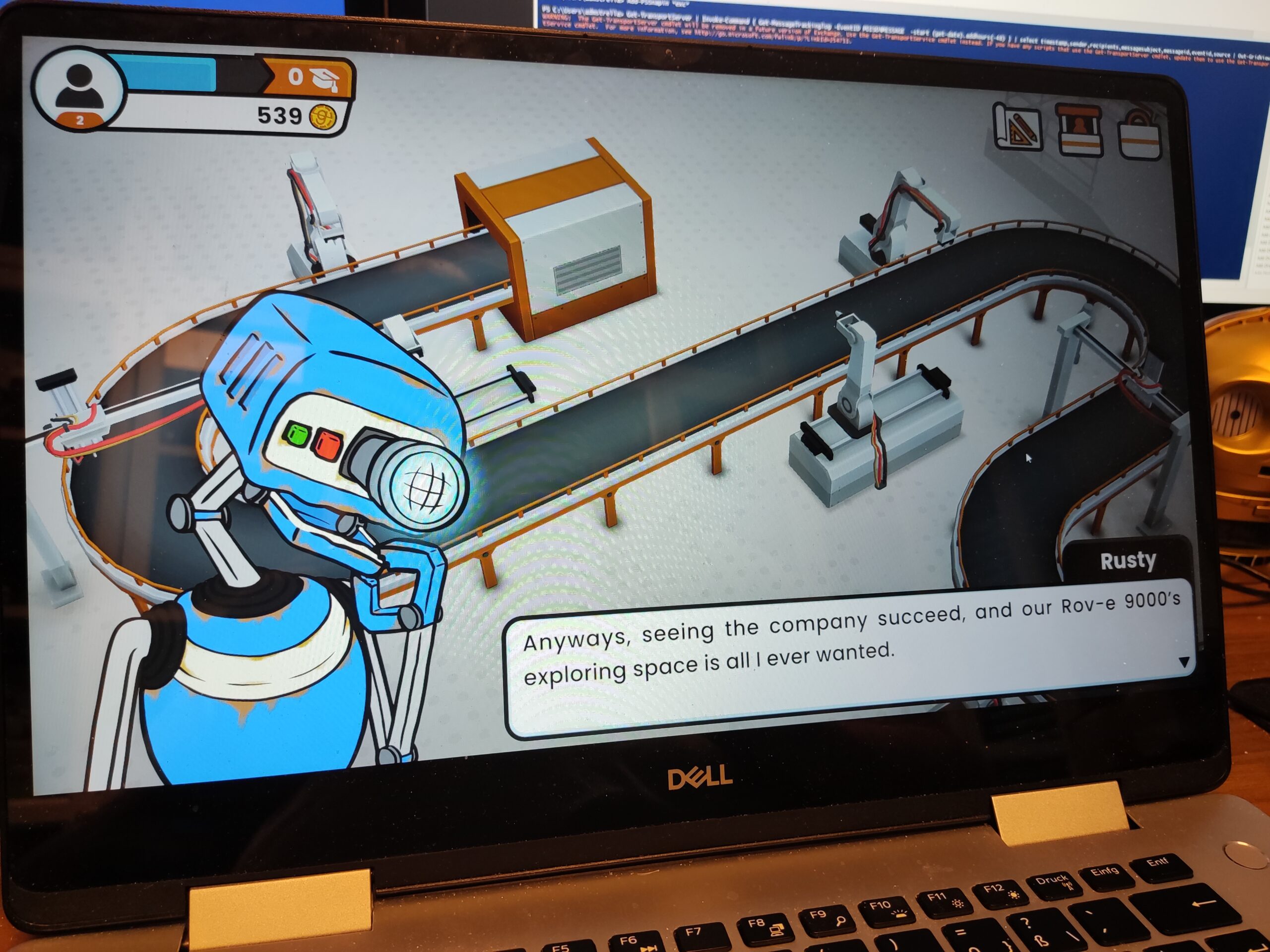
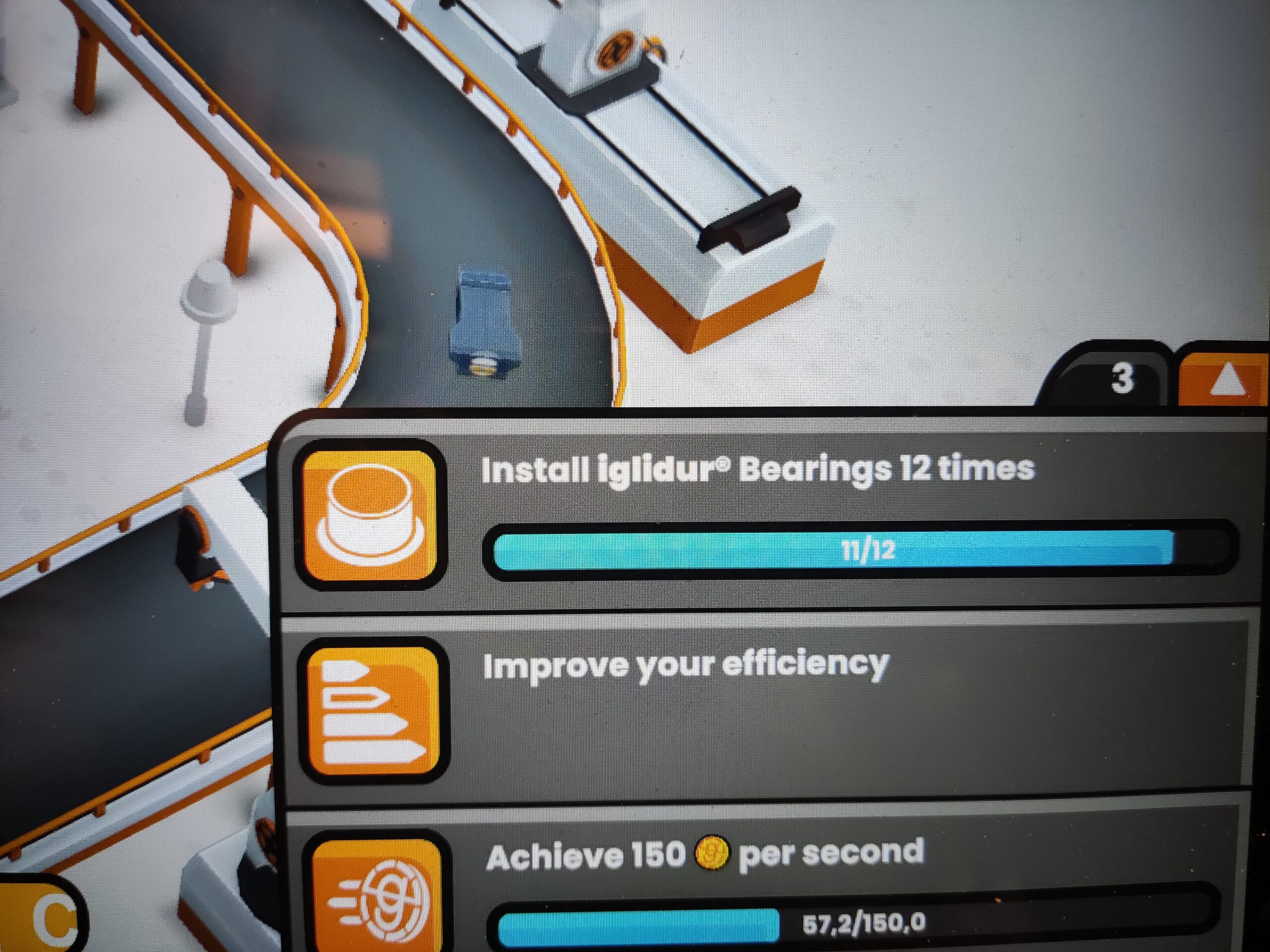
Guest post by IDS Corporate Communications
Autonomously driving robotic assistance system for the automated placement of coil creels
Due to the industry standard 4.0, digitalisation, automation and networking of systems and facilities are becoming the predominant topics in production and thus also in logistics. Industry 4.0 pursues the increasing optimisation of processes and workflows in favour of productivity and flexibility and thus the saving of time and costs. Robotic systems have become the driving force for automating processes. Through the Internet of Things (IoT), robots are becoming increasingly sensitive, autonomous, mobile and easier to operate. More and more they are becoming an everyday helper in factories and warehouses. Intelligent imaging techniques are playing an increasingly important role in this.
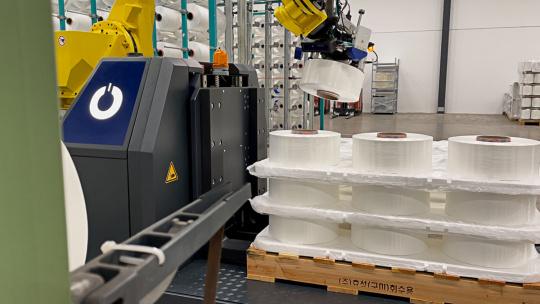
To meet the growing demands in scaling and changing production environments towards fully automated and intelligently networked production, the company ONTEC Automation GmbH from Naila in Bavaria has developed an autonomously driving robotic assistance system. The „Smart Robot Assistant“ uses the synergies of mobility and automation: it consists of a powerful and efficient intralogistics platform, a flexible robot arm and a robust 3D stereo camera system from the Ensenso N series by IDS Imaging Development Systems GmbH.
The solution is versatile and takes over monotonous, weighty set-up and placement tasks, for example. The autonomous transport system is suitable for floor-level lifting of Euro pallets up to container or industrial format as well as mesh pallets in various sizes with a maximum load of up to 1,200 kilograms. For a customer in the textile industry, the AGV (Automated Guided Vehicle) is used for the automated loading of coil creels. For this purpose, it picks up pallets with yarn spools, transports them to the designated creel and loads it for further processing. Using a specially developed gripper system, up to 1000 yarn packages per 8-hour shift are picked up and pushed onto a mandrel of the creel. The sizing scheme and the position of the coils are captured by an Ensenso 3D camera (N45 series) installed on the gripper arm.
Pallets loaded with industrial yarn spools are picked up from the floor of a predefined storage place and transported to the creel location. There, the gripper positions itself vertically above the pallet. An image trigger is sent to the Ensenso 3D camera from the N45 series, triggered by the in-house software ONTEC SPSComm. It networks with the vehicle’s PLC and can thus read out and pass on data. In the application, SPSComm controls the communication between the software parts of the vehicle, gripper and camera. This way, the camera knows when the vehicle and the grabber are in position to take a picture. This takes an image and passes on a point cloud to a software solution from ONTEC based on the standard HALCON software, which reports the coordinates of the coils on the pallet to the robot. The robot can then accurately pick up the coils and process them further. As soon as the gripper has cleared a layer of the yarn spools, the Ensenso camera takes a picture of the packaging material lying between the yarn spools and provides point clouds of this as well. These point clouds are processed similarly to provide the robot with the information with which a needle gripper removes the intermediate layers. „This approach means that the number of layers and finishing patterns of the pallets do not have to be defined in advance and even incomplete pallets can be processed without any problems,“ explains Tim Böckel, software developer at ONTEC. „The gripper does not have to be converted for the use of the needle gripper. For this application, it has a normal gripping component for the coils and a needle gripping component for the intermediate layers.“
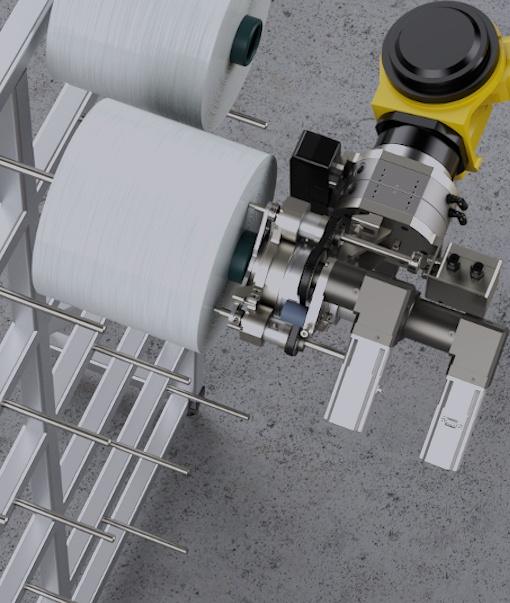
For this task, the mobile use for 3D acquisition of moving and static objects on the robot arm, the Ensenso 3D camera is suitable due to its compact design. The Ensenso N 45’s 3D stereo electronics are completely decoupled from the housing, allowing the use of a lightweight plastic composite as the housing material. The low weight facilitates the use on robot arms such as the Smart Robotic Asstistant. The camera can also cope with demanding environmental conditions. „Challenges with this application can be found primarily in the different lighting conditions that are evident in different rooms of the hall and at different times of the day,“ Tim Böckel describes the situation. Even in difficult lighting conditions, the integrated projector projects a high-contrast texture onto the object to be imaged by means of a pattern mask with a random dot pattern, thus supplementing the structures on featureless homogenous surfaces. This means that the integrated camera meets the requirements exactly. „By pre-configuring within NxView, the task was solved well.“ This sample programme with source code demonstrates the main functions of the NxLib library, which can be used to open one or more stereo and colour cameras whose image and depth data are visualised. Parameters such as exposure time, binning, AOI and depth measuring range can – as in this case – be adjusted live for the matching method used.
The matching process empowers the Ensenso 3D camera to recognise a very high number of pixels, including their position change, by means of the auxiliary structures projected onto the surface and to create complete, homogeneous depth information of the scene from this. This in turn ensures the necessary precision with which the Smart Robot Assistant proceeds. Other selection criteria for the camera were, among others, the standard vision interface Gigabit Ethernet and the global shutter 1.3 MP sensor. „The camera only takes one image pair of the entire pallet in favour of a faster throughput time, but it has to provide the coordinates from a relatively large distance with an accuracy in the millimetre range to enable the robot arm to grip precisely,“ explains Matthias Hofmann, IT specialist for application development at ONTEC. „We therefore need the high resolution of the camera to be able to safely record the edges of the coils with the 3D camera.“ The localisation of the edges is important in order to be able to pass on as accurate as possible the position from the centre of the spool to the gripper.
Furthermore, the camera is specially designed for use in harsh environmental conditions. It has a screwable GPIO connector for trigger and flash and is IP65/67 protected against dirt, dust, splash water or cleaning agents.
The Ensenso SDK enables hand-eye calibration of the camera to the robot arm, allowing easy translation or displacement of coordinates using the robot pose. In addition, by using the internal camera settings, a „FileCam“ of the current situation is recorded at each pass, i.e. at each image trigger. This makes it possible to easily adjust any edge cases later on, in this application for example unexpected lighting conditions, obstacles in the image or also an unexpected positioning of the coils in the image. The Ensenso SDK also allows the internal camera LOG files to be stored and archived for possible evaluation.
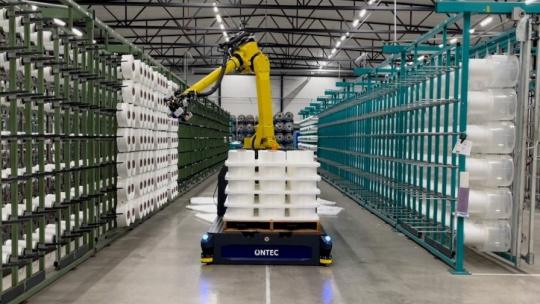
ONTEC also uses these „FileCams“ to automatically check test cases and thus ensure the correct functioning of all arrangements when making adjustments to the vision software. In addition, various vehicles can be coordinated and logistical bottlenecks minimised on the basis of the control system specially developed by ONTEC. Different assistants can be navigated and act simultaneously in a very confined space. By using the industrial interface tool ONTEC SPSComm, even standard industrial robots can be safely integrated into the overall application and data can be exchanged between the different systems.
Further development of the system is planned, among other things, in terms of navigation of the autonomous vehicle. „With regard to vehicle navigation for our AGV, the use of IDS cameras is very interesting. We are currently evaluating the use of the new Ensenso S series to enable the vehicle to react even more flexibly to obstacles, for example, classify them and possibly even drive around them,“ says Tim Böckel, software developer at ONTEC, outlining the next development step.
ONTEC’s own interface configuration already enables the system to be integrated into a wide variety of Industry 4.0 applications, while the modular structure of the autonomously moving robot solution leaves room for adaptation to a wide variety of tasks. In this way, it not only serves to increase efficiency and flexibility in production and logistics, but in many places also literally contributes to relieving the workload of employees.
More at: https://en.ids-imaging.com/casestudies-detail/picked-up-and-put-off-ensenso.html
When it’s too early in the morning and your robot refuses to work because it wants to snooze some more…
#igus #robolink #robot #robots #automation #lowcostautomation #snooze #morning #video #fun #sleep #just5moreminutes #tired #wakeup #robotsblog. Find the latest News on robots drones AI robotic toys and gadgets at robots-blog.com. Follow us on our Blog Instagram Facebook Twitter or our other sites. Share your robotics ideas and products with us. #robots #robot #omgrobots #roboter #robotic #mycollection #collector #robotsblog #collection #botsofinstagram #bot #robotics #robotik #gadget #gadgets
Today I installed my new igus low cost Automation robotarm. This still counts as common computer peripheral, right? …Right?
Find the latest News on robots, drones, AI, robotic toys and gadgets at robots-blog.com. Follow us on our Blog, Instagram, Facebook, Twitter or our other sites. Share your robotics ideas and products with us. #robots #robot #omgrobots #roboter #robotic #mycollection #collector #robotsblog #collection #botsofinstagram #bot #robotics #robotik #gadget #gadgets #drone #robotsofinstagram #instabots #photooftheday #picoftheday #followforfollow #instadaily #werbung #igus #rbtx #lowcostautomation #robotarm #robolink #automation #showyourdesk
VEX Robotics is revolutionizing workforce development education with VEX V5 Workcell